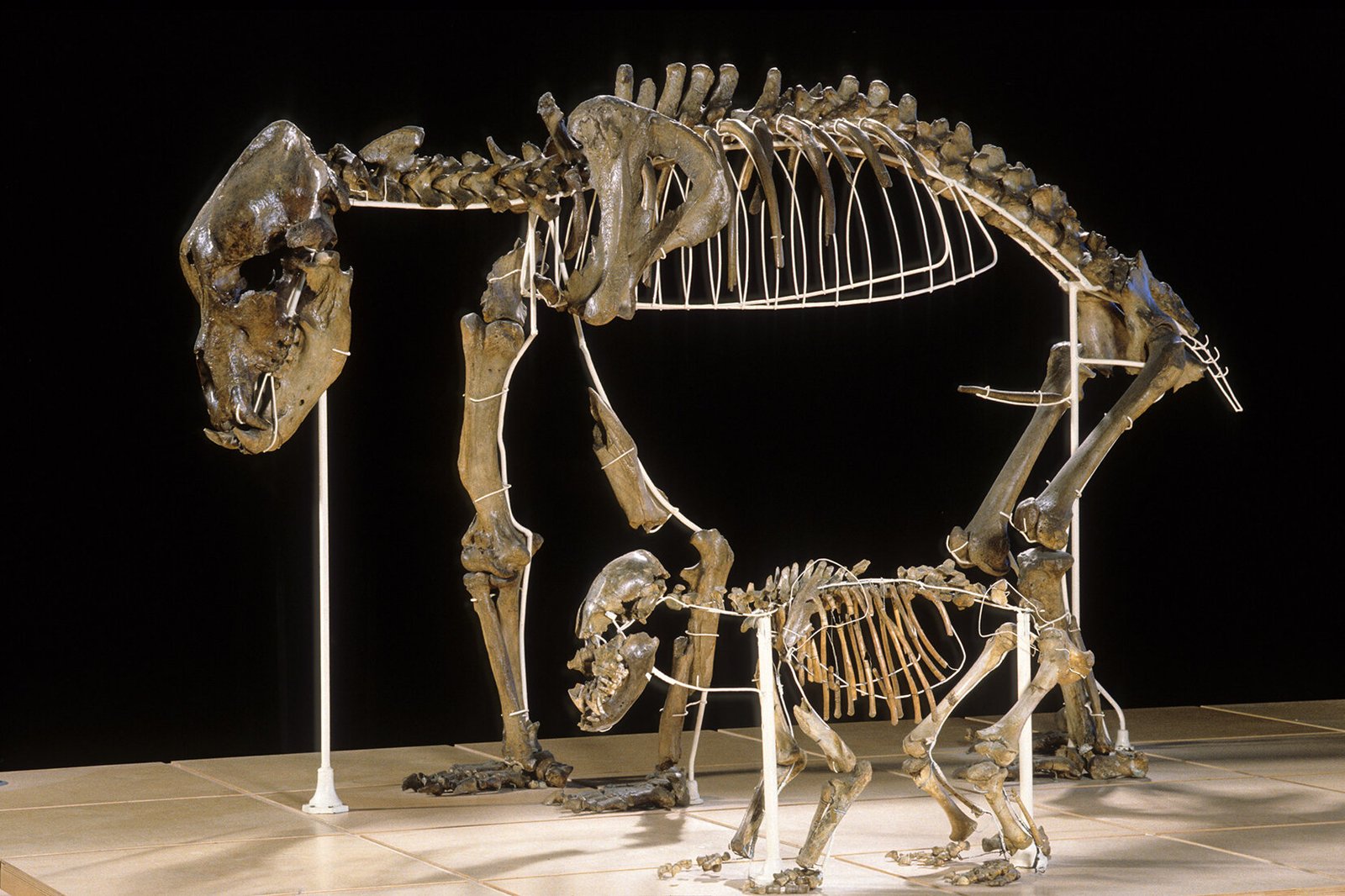This text has been reviewed in keeping with Science X’s editorial course of and insurance policies . Editors have highlighted the next attributes whereas making certain the content material’s credibility:
Skeleton of an grownup cave bear subsequent to a cub within the Royal Belgian Institute of Pure Sciences (RBINS). Credit score: Thierry Hubin, RBINS
The variations are within the particulars: Particular 3D form analyses of the jaws and dentitions of cave bears and brown bears residing on the identical time from the fossil website within the caves of Goyet in Belgium present their clearly completely different meals spectrum.
The weight-reduction plan of brown bears residing round 30,000 years in the past differs solely barely from that of their North American kin nonetheless residing in the present day. The comparative examine has been revealed within the journal Boreas.
The brown bear Ursus arctos residing in the present day is the closest residing relative of the cave bear Ursus spelaeus, which turned extinct about 25,000 years in the past. Brown bears and cave bears lived facet by facet in the identical areas, together with within the Namur area of Belgium, 1.3 million to 25,000 years in the past and possibly competed for plant meals. The caves of Goyet and Trou des Nutons include the stays of each bear species, that are about 30,000 years previous.
Of their new examine, Anneke van Heteren, mammal curator on the Zoologische Staatssammlung München (SNSB-ZSM), and her colleague Mietje Germonpré of the Royal Belgian Institute of Pure Sciences (RBINS) confirmed that the 2 contemporaries fed in another way. The cave bear was a pure vegan, whereas the brown bear was an omnivore even then—as it’s in the present day. The form and biomechanics of the jaws of the 2 bear species differ considerably.
However the researchers had been additionally in a position to detect small variations within the jaws of the fossil brown bears in comparison with their conspecifics nonetheless residing in the present day. “Presumably, the fossil brown bears from Belgium ate barely extra plant meals than the brown bears from North America in the present day,” states van Heteren.
The group additionally analyzed cubs of cave bears from Belgium as a part of their work. Their jaws had been most likely much less properly suited to chewing stable meals than these of grownup cave bears. “Presumably, the younger bears had been additionally nonetheless being fed milk by their moms. Their jaws first needed to adapt to the later improvement of their everlasting dentition,” van Heteren provides.
The biomechanical variations within the jaws are notably evident of their gape angles when chewing their meals. The researchers from Munich and Belgium used what is called geometric morphometrics for his or her research. That is the measurement of skeletal elements with the assistance of measuring factors, so-called landmarks. The strategy allowed the researchers to visualise the bears’ jawbones in three dimensions and examine them utilizing statistical strategies.
Extra info: Anneke H. van Heteren et al, Geometric morphometric evaluation of the fossil bears of Namur, Belgium: Allometry and ecomorphology, Boreas (2023). DOI: 10.1111/bor.12629
Supplied by Staatliche Naturwissenschaftliche Sammlungen Bayerns



